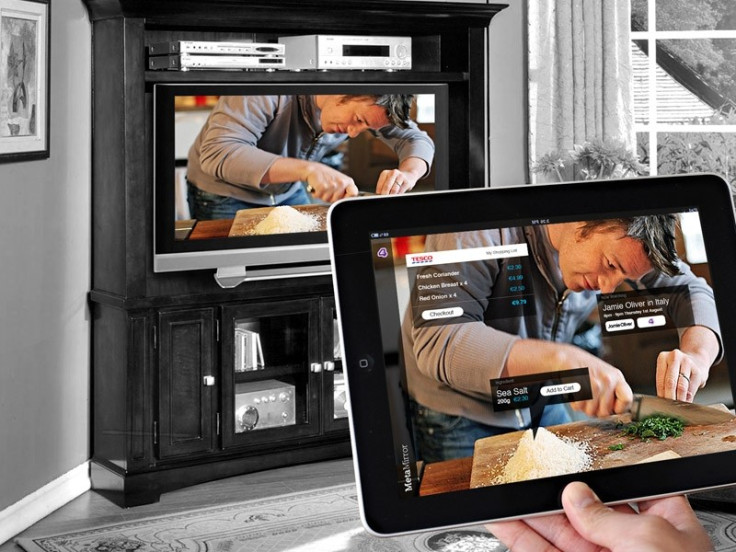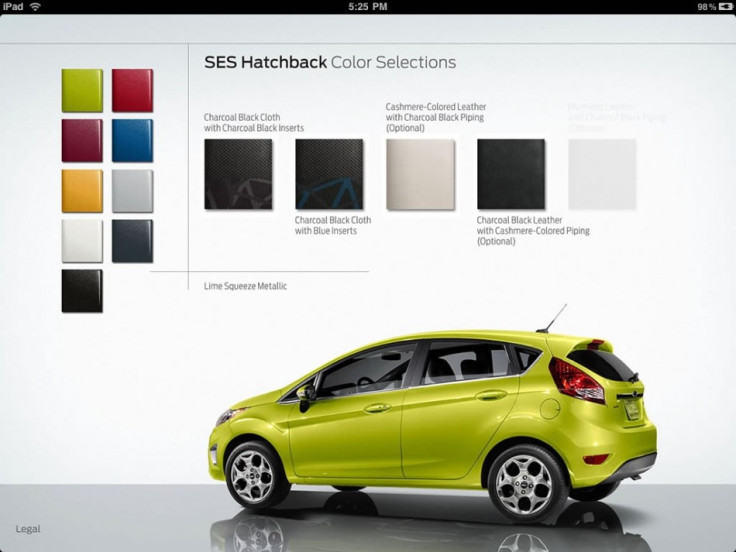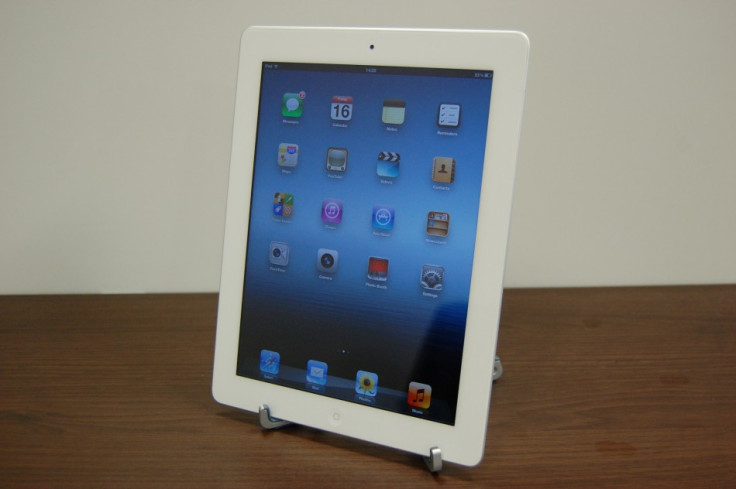Why the 'Second Screen' is Your Next Key Marketing Strategy
We speak to Google, Zeebox and InMobi about how people using a second screen while watching a TV could be a marketers dream come true - but only if they get their strategy right.

'Second screen' is the latest media catchphrase. If you've not been subjected to these buzz words yet then the definition in the next Oxford English Dictionary will probably read: "Users who sit and fiddle with their smartphones, laptops or tablet PCs while they are watching TV."
It's a phrase you might expect to find banned in boardrooms where television advertising is discussed. Not only do TV marketers already have to contend with DVR users spinning past their commercials without even displaying them, now even the captive audience that is watching live TV has somewhere else to go while products are paraded in front of them.
A recent survey by market research firm Forrester found that 85 percent of tablet owners in the US use their devices while watching TV, while over 70 percent of UK users do the same according to a survey commissioned by Mobext and InMobi.
Is this the death knell for TV advertising?
Amazingly, rather than being seen as a distraction from what's being shown on the television, many are suggesting that the second screen could be a marketing dream. If advertisers can work out how TV and mobile devices complement each other and how they affect the decision-making process, they can connect with their audiences at the right time and place.
"The opportunity for brands lies in the fact that consumers have a lot of time to spend with their tablets. They are relaxed and it's about how we target them in that mind set," said Pilar Barrio, head of social at mobile marketing firm Socialyse.
"For a long time I've challenged the phrase web browsing. I don't think people browse the web on a PC. I think they search for a specific thing and it is very task driven and goal oriented," added John Stoneman, EME sales director at InMobi, adding, "When you are dual screening you are using downtime so you are more likely to be browsing and you are more likely to be stimulated by something you see or hear on the television. That makes it a huge opportunity."
Purchase Power
The key fact that excites marketing professionals is that tablet owners are already using their devices to make online purchases, so targeting them while they are surfing could have a big impact. According to Denise Turner, head of intelligence at MPG Media, 69 percent of tablet users buy something online in an average month.
"Purchases are a really big part of what tablet owners are doing with their device. In fact 22 percent of tablet owners say they have shopped less in a physical store since getting a tablet," Turner explained.
Tablet use is also most likely to occur in the home, with usage peaking between 6pm and midnight.
"Clearly at home the tablet has taken a very strong position in all aspects of the purchase funnel, particularly at the awareness and evaluation point," Stoneman said.
Jonathan Abraham, industry head of mobile at Google UK, said the effects of tablet PC usage were already noticeable. He explained how Google had been able to monitor search campaigns to see how tablet traffic affected them.
"We've been able to look at [advertisers'] accounts and get a really good sense of the additional value that tablets are adding. We're seeing much higher order values, we're seeing conversion rates, in many cases, that are higher on tablets and we're also seeing the types of searches being much more explorative," Abraham revealed.
There's also a belief that the larger size of tablets encourages sharing within the family, compared with smaller devices such as smartphones. With big-ticket items such as cars and holidays usually being joint decisions in a household, tablets can be a great way for advertisers to reach multiple people at the same time.

Tablet Strategy
Ernesto Schmitt, co-founder of social TV app Zeebox, raised the point that consumers had taken it upon themselves to enhance their live viewing experiences using tablets and smartphones.
He noted that a third of all internet browsing happens in the UK while people are watching TV, while 40 percent regularly look for more information on things they see on screen. Almost 40 per cent also buy and research products they've just been "stimulated by".
"For me what is most striking is not that this is happening, or even the extent to which it is happening - because it is already resolutely mainstream and not niche - but it's the fact that it's all taking place without it being productised. The television doesn't know that there's a mobile device and the tablet has no clue that you are watching TV," Schmitt said.
Meanwhile, InMobi's Stoneman pointed to this kind of user behaviour as the reason all brands now needed a tablet marketing strategy.
"If you have not got a strategy that sits alongside your television advertising or your PC strategy which is really going to work on the tablet device then you are missing a trick. The chances are your competitors aren't," he warned.
David Graham, head of digital at Havas Media, went even further and suggested that content needs to be specifically crafted in favour of tablets.
"The message is that there are more valuable leads to be found and higher ticket sales to be made to tablet users. The logic then follows that brands and online retailers really should be optimising their sites for a tablet experience," Graham advised. "Sites need to take advantage of those unique interactive features of the user interface that tablets give you, such as pinch, zoom, tip or swipe."
"What I've found gets marketing staff really excited is when they see their brand in a rich media design on a tablet and then sometimes the penny drops as to how effective that device could be to help consumers to touch their brand," Google's Abraham added.
Flash Backwards
One potential problem brands face when communicating with their tablet PC audience is technology. As Graham points out, while many tablets will run Flash, iPads don't and Apple's product currently dominates the tablet market.
"It would be a real shame to have invested in all this beautiful creative or a wonderful website or video in your digital advertising just for tablet users to see a big old static backup Gif. Or worse still a broken link or a blank space. And believe me there's an awful lot of that still going on," Graham said.
Stoneman reiterated the point that sites which depend heavily on Flash "simply aren't going to work in an iPad dominated market" and warned that it was pointless to spend millions on a fantastic TV spot only to push it out to dual screening viewers and have it fail.
"If you're running Flash in your website and there's no tablet or mobile experience that people can default to then you are providing quite a bad user experience. That's going to turn people of your brand," he said.
MPG Media's Turner admitted that she had experienced similar problems as an iPad user and a consumer.
"I think the frustrating thing is when I come across a site with Flash where I can't complete a transaction. That has happened to me a few times and it gets quite irritating," she moaned.

The Social Network
Barrio also urged brands to exploit the role that social media plays in connecting with second screen users. She warned that it was not just about getting people to buy quickly but also about how consumers get to that conversion point.
"How do you build trust and relationships and how do you create experiences that will make consumers want to spend time with your brand?" she asked. "Social plays a really important role in that.
"It's about the opportunity to offer them a really immersive, deeper experience that allows you to actually build a relationship with your brand. So it's not about a fast experience just to buy or explore something. They have time to spend with your brand and that will allow them to get to buy your products as well."
Graham also suggested that companies had to match up their activities across all of their online platforms to get the best from a second screen strategy. While that practice would require extra planning, he argued that brands should be rewarded with a better relationship between themselves and consumers.
"The advantage goes to the advertiser who doesn't only have their TV schedule synced up with their paid search - that should really be a hygiene factor these days - but also they are syncing up their social media activity, their display activity, their digital partnerships and their content. These are no longer discreet pieces of activity, they are interconnected and they should be planned to be so," he said.
Are companies which don't have a clear second screen strategy already out of the loop? According to Graham, the practice is in its earlier stages and brands can take their first baby steps now and still have a chance to learn from their errors.
"There really is no one silver bullet or one single cupid's arrow. It takes time, it takes investment, and importantly a really clear direction. There's no time like the present and while the adoption curve is still building you can afford to test and learn and make mistakes and they won't be quite so visible," he advised.
Must Read:
Exclusive: BBC Second Screen Strategy is Wrong, Says Zeebox Founder
© Copyright IBTimes 2025. All rights reserved.





















